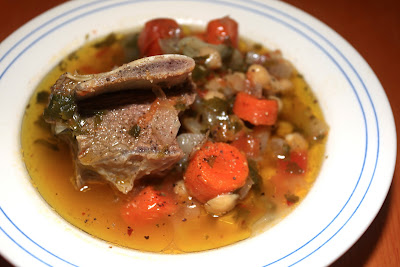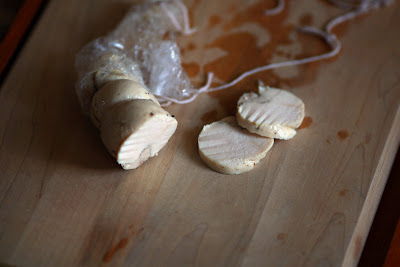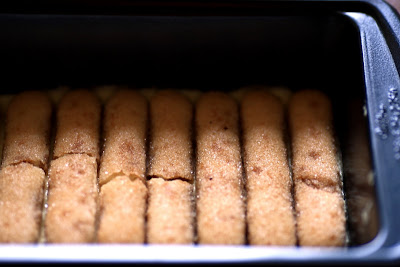
I was very disappointed when I read an article long time ago. The article was on a food website mentioning about “What to eat” and “What not to eat.” It was about food from all over the world. It said, “Don’t eat moussaka when you visit Greece because it is oily.”
Moussaka is one of the classic Greek dishes. In my opinion
you got to eat moussaka when you visit Greece.
First of all, it is very delicious. Beef/lamb meat in sweet tomato sauce matches tasty tender eggplants and potatoes. The béchamel sauce, which is used on the top of the layers of the meat and vegetables, is very flavorsome with aromatic nutmeg seasoning. All of the layers rouse my appetite a great deal.
Next, it is time consuming if you cook it by yourself at home. Frying eggplants and potatoes, cooking meat sauce and béchamel sauce require lots of time and effort. Not to mention, cleaning after the mess in the kitchen (I love my dishwasher!). Usually it takes 2 to 3 hours for preparing/cooking and 50 to 60 minutes for baking moussaka. By the time I serve my moussaka, I am generally exhausted.
Finally, Greek restaurants use olive oil to fry (I believe) eggplants, potatoes and meat. Everyone knows olive oil is good for you since Goddess Athena sent an olive tree to the citizens of Attica as a gift for naming their city after her! So, don’t hesitate to consume olive oil.
Thus, if you visit Greece, please try this traditional Greek / Mediterranean dish!
In case, you do not trust the oil that Greek restaurants use or you do not have a plan to visit Greece soon, plus you do not mind spending lots of time and effort to cook moussaka, please refer to my recipe here and enjoy this delicious dish!
Ingredients:
5-6 sliced eggplants
5-6 peeled and sliced potatoes
1 lb of ground beef
1 chopped onion
2-3 cloves of finely chopped
3 cups of diced ripe tomatoes2 tablespoons of tomato paste
1 cup of white wine
½ cup of chopped flat-leaf parsley
A pinch of cinnamon
Salt and freshly ground black pepper
Extra virgin olive oil
½ cup of breadcrumbs
3 tablespoons of shredded/ground Parmesan cheese
Béchamel sauce:
5 tablespoons of butter
½ cup of all-purpose flour
3 cups of milk
1 freshly ground nutmeg
1 egg, beaten
2 tablespoons of lemon juice
Salt and freshly ground black pepper
3 tablespoons of shredded/ground Parmesan cheese
Directions:
1. Add plenty of water and a pinch of salt in a large bowl. Soak the sliced eggplants in the water for about 15 minutes. Drain them well.
2. Heat plenty of olive oil in a large fry pan and fry the eggplants and potatoes well. Transfer them from the fry pan. If you do not like the idea of frying the vegetables, bake them in the oven after you have sprinkled then with olive oil.
3. Heat the olive oil in the same fry pan and fry the chopped onion and garlic until they become translucent. Add the ground beef and cook till well done.
4. Add the tomatoes and tomato paste and stir them well. Add the white wine and stir the mixture well.
5. Season the mixture with salt, freshly ground pepper, and cinnamon. Turn off the heat and add the parsley and cover the pan.
6. For béchamel sauce: Heat the butter on another pan and let the butter melt completely. Add the milk and flour little by little. Stir and simmer on low heat until the mixture is thickened.
7. Turn off the heat and add the egg, lemon juice, nutmeg, salt, black pepper and Parmesan cheese. Mix them well.
8. Preheat the oven to 350 F degrees.
9. Place half of the potato slices and make a layer on the large oven pan. Next, place half of the eggplant slices and make a layer. Pour and spread half of the tomato mixture. Make one more layers in the same way. Pour the béchamel sauce and spread evenly over the top. Sprinkle the bread crumbs, the 3 tablespoons of shredded Parmesan cheese.
10. Bake it in the oven for 50 to 60 minutes until the top is brown.
 This salad was one of the side dishes I made for the Thanksgiving dinner. The main dish in the Thanksgiving dinner is, of course, a big turkey. So I made all of the side dishes to be simple vegetarian dishes.
This salad was one of the side dishes I made for the Thanksgiving dinner. The main dish in the Thanksgiving dinner is, of course, a big turkey. So I made all of the side dishes to be simple vegetarian dishes.



















 Having a quiche at
Having a quiche at  Ingredients:
Ingredients: Directions:
Directions:

 I was very disappointed when I read an article long time ago. The article was on a food website mentioning about “What to eat” and “What not to eat.” It was about food from all over the world. It said, “Don’t eat moussaka when you visit Greece because it is oily.”
I was very disappointed when I read an article long time ago. The article was on a food website mentioning about “What to eat” and “What not to eat.” It was about food from all over the world. It said, “Don’t eat moussaka when you visit Greece because it is oily.”
 Ingredients:
Ingredients: Directions:
Directions:

 Ingredients:
Ingredients:














 Directions:
Directions:


